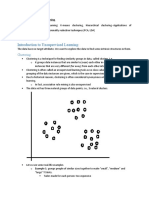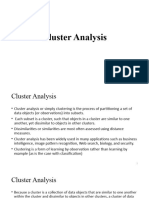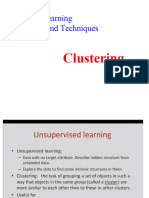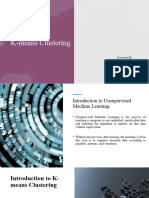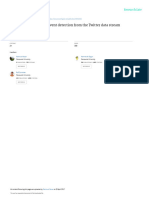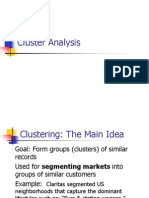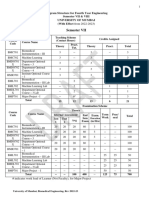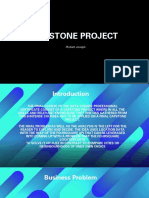0% found this document useful (0 votes)
5 views73 pagesLecture 15 Unsupervised Clustering
The document discusses unsupervised learning, focusing on clustering techniques such as K-means and hierarchical clustering. It explains the differences between supervised and unsupervised learning, the significance of clustering in various fields, and the strengths and weaknesses of the K-means algorithm. Additionally, it covers aspects like distance measurement, cluster representation, and evaluation criteria.
Uploaded by
Vaishnavi SharmaCopyright
© © All Rights Reserved
We take content rights seriously. If you suspect this is your content, claim it here.
Available Formats
Download as PDF, TXT or read online on Scribd
0% found this document useful (0 votes)
5 views73 pagesLecture 15 Unsupervised Clustering
The document discusses unsupervised learning, focusing on clustering techniques such as K-means and hierarchical clustering. It explains the differences between supervised and unsupervised learning, the significance of clustering in various fields, and the strengths and weaknesses of the K-means algorithm. Additionally, it covers aspects like distance measurement, cluster representation, and evaluation criteria.
Uploaded by
Vaishnavi SharmaCopyright
© © All Rights Reserved
We take content rights seriously. If you suspect this is your content, claim it here.
Available Formats
Download as PDF, TXT or read online on Scribd
/ 73







